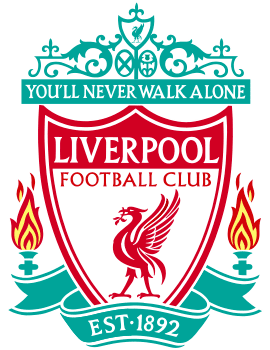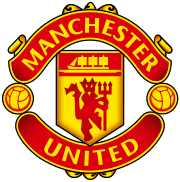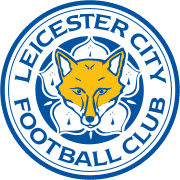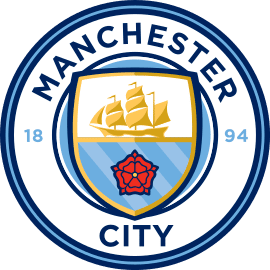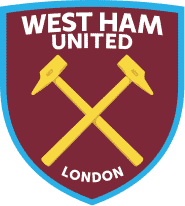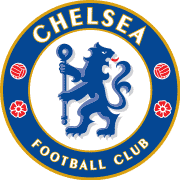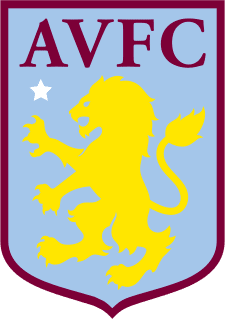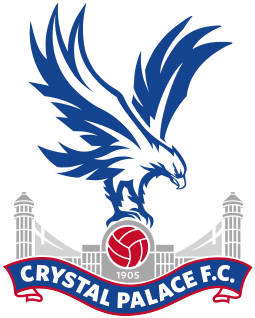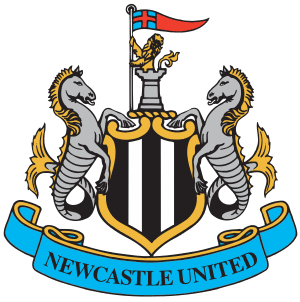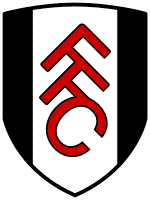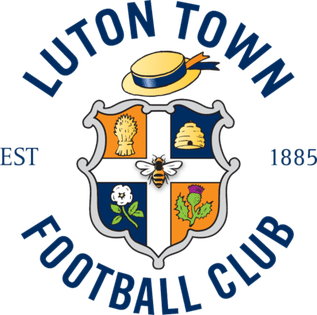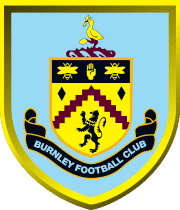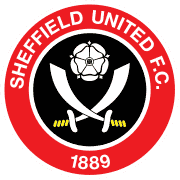Liverpool FC Tryouts & Club Guide: History, Stadium, Players, and More!

Welcome!
Discover the world of soccer with fcscout.com, your go-to scout for club tryout information, club guides, player profiles, in-depth product reviews, and more. We’re dedicated to exploring and revealing the best in each domain, empowering you with knowledge to make informed choices.
Thank you for being here!
Hi, I’m Carlos! A coach, sports enthusiast, and the founder of FCScout.com.
I fell in love with the game at a very young age like many of you. I’ve been following and playing soccer for many years.
Throughout my career, I always enjoyed helping soccer players chase their dreams, which is why I started this website. I wanted to reach a larger audience outside of my local area and fcscout.com was born.
This website is a platform I will be using to update club pages on any tryouts, stadiums, players, tech, and more from clubs around the world. I also create free recruitment profiles for players looking to have that extra competitive edge when reaching out to clubs.
That’s it. That’s my pitch for you to stick around (or browse the site as you please).
This is already too much text for a “see more” drop-down button thing. If you want to reach out to me, head on over to my contact page 🙂

Liverpool Football Club is a professional football club in Liverpool, England. The club competes in the Premier League, the top tier of English football.
Liverpool FC Youth Development System
Liverpool Football Club is recognized around the world as one of an elite group of clubs with a true worldwide reputation. We pride ourselves in creating the best environment for the development of young players, both as footballers and as people.
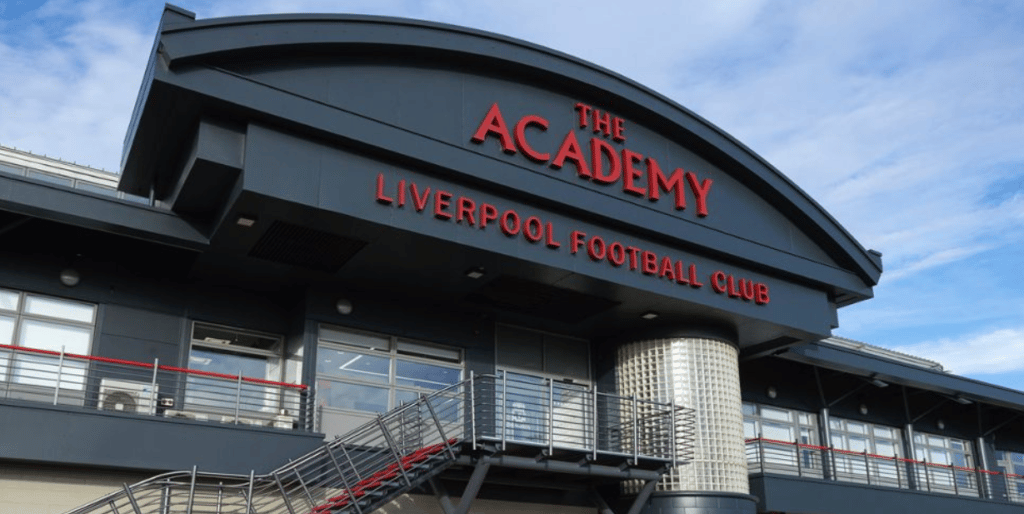
We have a very special philosophy which is well known by our players, staff and fans, is recognized all over the world and sets us aside from other football clubs. The characteristics of playing ‘The Liverpool Way’ were no more evident than during the 2005 Champions League final. Team spirit, hard work, determination and the ability to overcome any obstacles in life and above all play with dignity and fair play…. these are all the values and characteristics we look for in our players.
For the last 50 years the club has been at the forefront of British and European football, winning numerous championships and European club tournaments. During this time, there has been a consistent tradition of developing top class players, particularly from the Liverpool Academy; Steven Gerrard is the ultimate example of a home grown talent who ranks at the very top of the worldwide game.
As one big LFC family we have a responsibility to provide young players around the world with access to the best environment and coaching possible, that’s what we aim to achieve with our International Academies.
By following the same curriculum that we deliver to our players at the LFC Academy we can ensure that all participants get the very best football education from our coaching staff. I believe it’s very important to develop a players’ skills both on and off the pitch and our International Academies do just that.
I am extremely proud to be an ambassador of this fantastic programme which continues to go from strength to strength. This role allows me to take LFC to our young fans across the world and show them just what it means to be part of the LFC family.
Ian Rush – LFC Legend & Soccer Schools Ambassador
Liverpool FC eAcademy
In the meantime, we do have the LFC eAcademy available which provides a detailed overview of all the techniques and skills we prioritise at LFC.

Designed to be easily accessible to young fans around the world, the platform provides access to professional skills development videos and LFC coach demonstrations to break each technique down in to the most important aspects to focus on.
Developed by coaches at LFC, is an unparalleled opportunity for young players to benefit from the leading academy expertise of the Premier League champions. Whether they are starting out in the game or want to supplement other forms of training they may be undertaking.
Through world-class academy training methods, elite technical insights and inspiring content from the Reds’ first team heroes, LFC’s new e-Academy provides youngsters with the unique opportunity to develop their individual skills and techniques.
So, if you want to shoot like Mo Salah, dribble like Sadio Mane, pass like Thiago or strike a ball like Trent Alexander-Arnold, the eAcademy will show you how to do it.
To register for the Liverpool eAcademy, please click here.
Liverpool FC Residential Camps
The LFC UK residential camps are the ultimate UK-based training experience for young players. Based at Repton School, players learn to play the Liverpool way with our LFC coaches using the same curriculum as the LFC Academy.
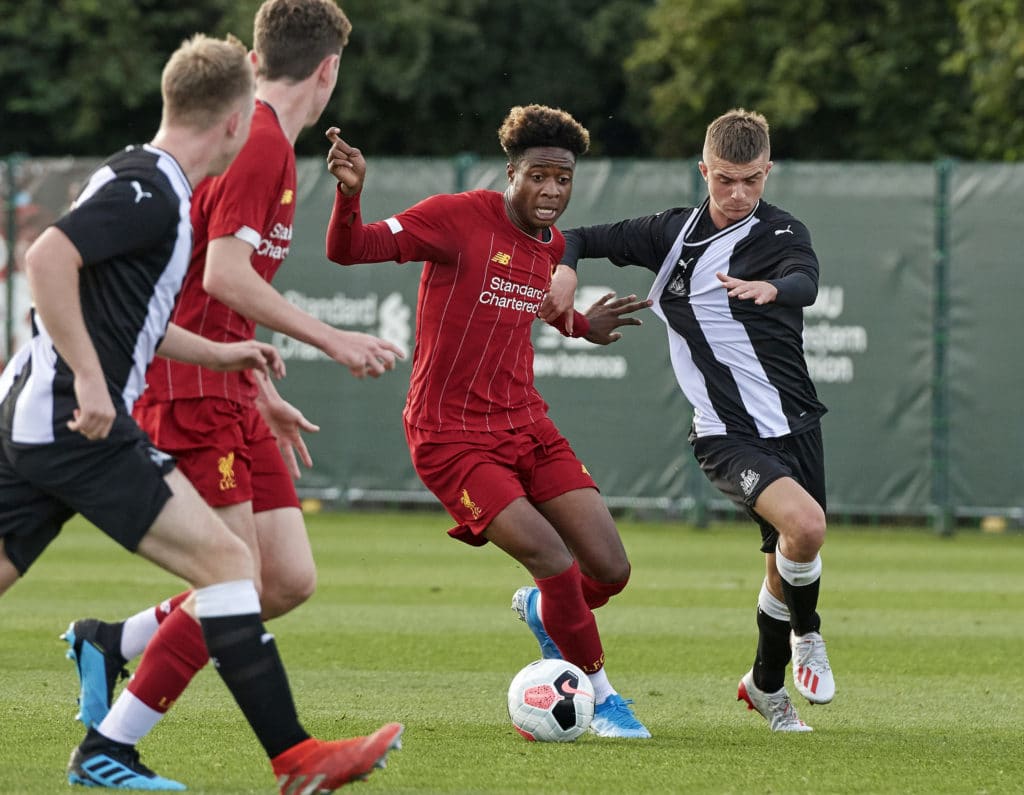
In addition, international players can choose to take English language lessons alongside football coaching.
For more information and to book on our UK residential camps please visit the UK camps website HERE.
Liverpool FC International Academy
To give young players around the world an opportunity to play ‘The Liverpool Way’ we have expanded our programmes globally, via our network of international partners.

All coaching is delivered by official LFC Academy coaches, to ensure they are operated consistently, to the highest standards and in the best facilities we can find.
Use the map to find where the nearest Liverpool FC International Academy programme is to you. If there isn’t an official LFC location nearby the best option for you is our eAcademy, which enables thousands of young players around the world to learn to play the Liverpool way regardless of where they are based
Liverpool FC International Locations
| Austria Sport & Media 2636 Øyer Norway Website >> | China 3099 Wanqing Road Chenggong District Kunming Yunnan Province Website >> | Cyprus GSP Stadium Pangyprion Avenue Strovolos Cyprus 1501 Nicosia Website >> |
| Czech Republic Sport & Media 2636 Øyer Norway Website >> | Denmark Sport & Media 2636 Øyer Norway Website >> | Egypt Al Rehab Sporting Club Rehab City New Cairo Egypt 11841 Website >> |
| England Repton School Repton Derbyshire DE65 6FH Website >> | England Academy, Liverpool The liverpool Way, Kirkby Liverpool United Kingdom L33 7ED Website >> | Finland Sport & Media 2636 Øyer Norway Website >> |
| Gran Canaria Gran Canaria Sport & Media 2636 Øyer Norway Website >> | Hong Kong Unit 2008, Floor 20, Westley Square, 48 Hoi Yuen Road, Kwun Tong, Kowloon Hong Kong Website >> | Iceland Íþróttamiðstöðinni Varmá 270 Mosfellsbær Iceland Website >> |
| Italy Sport & Media 2636 Øyer Norway Website >> | Japan Sports Partners Co Nakano Sunplaza 9F, 4-1-1 Nakano, Nakano-Ku Tokyo 164-8512 Website >> | Korea #501 S-building, 253 Hannuri-daero Sejong Korea 30127 Website >> |
| Mauritius Mauritius Ministry for Youth and Sport Citadelle Mall Port Louis Mauritius Website >> | Norway Sport & Media 2636 Øyer Norway Website >> | Slovenia Sport & Media 2636 Øyer Norway Website >> |
| Sweden Sport & Media 2636 Øyer Norway Website >> | Switzerland Sport & Media 2636 Øyer Norway Website >> | USA – Bay Area Suite 142, 300 Orchard City Drive, Campbell, CA, 95008 Website >> |
| USA – Central Florida 1238 Fountain Coin Loop Orlando USA Fl 32828 Website >> | USA – Connecticut 398 Pomfret St Pomfret Center USA CT 06259 Website >> | USA – Illinois 999 West Main Street West Dundee USA IL 60118 Website >> |
| USA – Maryland 1518 South Charles St. Baltimore MD. 21230 Website >> | USA – Massachusetts 95 Camelot Drive, Suite 5A Plymouth MA 02360 Website >> | USA – Michigan Ultimate Soccer Arenas 867 South Blvd East Pontiac, Michigan USA 48341 Website >> |
| USA – New Jersey 8 Brooklyn Ct Blackwood NJ 08012 Website >> | USA – Rhode Island 175 Danielson Pike Suite 116 North Scituate RI 02857 Website >> | USA – SoCal 12 Mauchly P Irvine USA CA 92618 Website >> |
Coaching at LFC International Academy
Liverpool FC International Academy has a fantastic team of coaches who operate in many different countries. Whichever part of the world we are in, whether it is a Soccer School in Liverpool or at an International Academy, our coaches deliver the highest standard of football coaching in line with the values of ‘The Liverpool Way’.
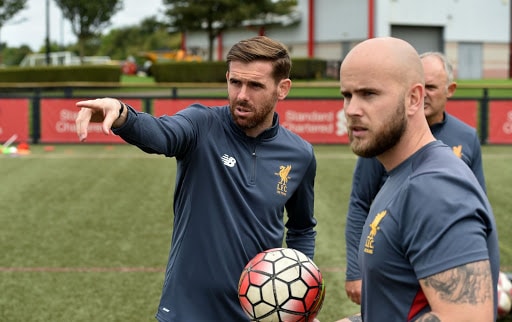
Many of our coaches get to experience coaching trips overseas, giving them the opportunity to represent the club around the globe. We currently have 11 coaches who have progressed through this process to take up full time Head Coach positions at one of our International Academies.
We annually recruit highly skilled coaches who have the potential to deliver our unique Liverpool FC programmes to our set criteria. If you believe that you have the personality, experience and qualifications required to coach ‘The Liverpool Way’ then the world’s greatest football family is waiting for you to submit your application.
New coach requirements:
- To learn the values and history of Liverpool FC
- To create a positive, enjoyable environment in which each individual can thrive
- Have the ability to work alongside a team of coaches
- Deliver presentations to players, parents and partners
- Have a passion to progress your coaching development
- Have the confidence to deliver high quality football sessions ‘The Liverpool Way’
- Be organised, punctual, self-motivated and reliable
- Provide each player with an experience they will never forget.
Minimal qualifications required:
- FA Coaching Level 2 (or equivalent)
- Aged 18 or over
- FA Safeguarding Certificate
- FA Emergency Aid Certificate
To submit a new coaching application, please click here.
Liverpool FC Recruitment Trials
At the time of this writing, there is no official publishing’s on Liverpool FC trials. Please come back at a later date while we monitor this club or click here to visit their official news section.
EXPLORE MORE CLUBS!
Explore more professional clubs by continent.
Liverpool FC History
A disagreement between the committee of Everton Football Club and John Houlding, the club president and owner of the land at Anfield, led to the formation of Liverpool Football Club. Everton moved to Goodison Park in 1892, after spending eight years playing at the stadium, and Houlding created Liverpool F.C. to play at Anfield about the same time. Everton Football Club and Athletic Grounds Limited (also known as Everton Athletic for short) was the club’s original name. In March 1892, the club changed its name to Liverpool Football Club and received official recognition three months later. This change occurred because the Football Association refused to recognize the club as Everton.
On September 1, 1892, Liverpool played their first game, which was a pre-season friendly match against Rotherham Town. They ended up winning 7–1 on their debut. The side that Liverpool played against Rotherham was formed entirely of Scottish players. The players that came from Scotland to play in England during those times were referred to as the Scotch Professors. The players had been recruited by the manager, John McKenna, when he returned from a scouting tour to Scotland; hence, they were known as the “team of Macs.” The team finished its first season undefeated and went on to win the Lancashire League. The next year, they were invited to play in the Football League Second Division. The club was elevated to the First Division as a result of its first-place performance, and it went on to win that division in 1901 and again in 1906.
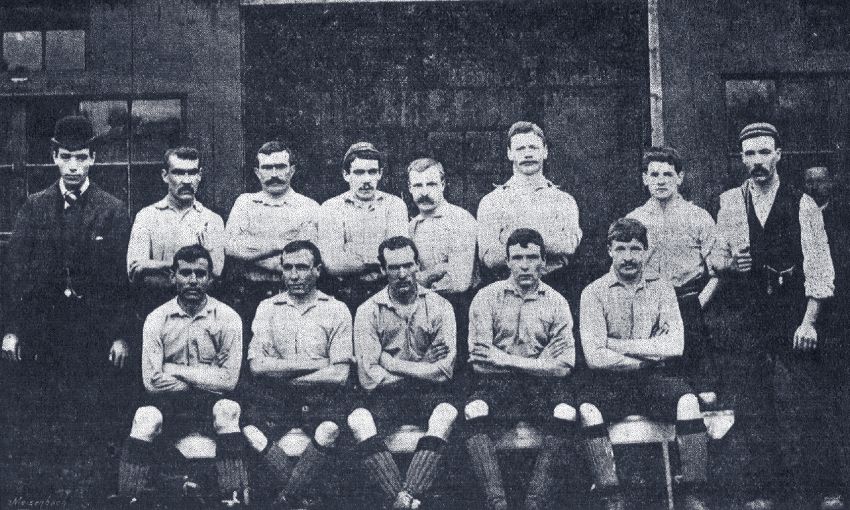
In 1914, Liverpool competed in its first FA Cup Final and fell to Burnley by a score of 1-0. It won the League championship in successive years (1922 and 1923), but it would not win another trophy again until the 1946–1947 season, when it won the First Division for the sixth time under the supervision of former West Ham United center back George Kay. In 1950, when they faced off against Arsenal in the Cup Final, Liverpool ended up losing for the second time. During the 1953–1954 season, the team played in the Second Division after being demoted from the First.
Bill Shankly was hired as the manager of Liverpool shortly after the club’s FA Cup match against Worcester City, a non-league team, ended in a loss for Liverpool by a score of 2–1. Shankly and the other members of the “Boot Room,” including Joe Fagan, Reuben Bennett, and Bob Paisley, began the process of reshaping the team shortly after his arrival. He let go of 24 players and converted a room at Anfield that had been used to store boots into a room where the coaches could discuss strategy. The club was re-admitted to the First Division in 1962 and went on to win the competition in 1964, which marked the first time in 17 years that they had done so. The team took home its first FA Cup that year (1965). The team was victorious in the
First Division in 1966 but fell short against Borussia Dortmund in the final of the European Cup Winners Cup. In the 1972–1973 season, Liverpool won the League, the UEFA Cup, and the FA Cup. The next season, Liverpool won the FA Cup once more. Soon after that, Shankly decided to retire, and his position was taken over by Bob Paisley, who had been his assistant. Paisley led the team to another League and UEFA Cup double in 1976, which was the club’s second season under his management. The next year, the team successfully defended its League title and went on to become the first in its history to win the European Cup; however, it was defeated in the 1977 FA Cup Final.
Both the European Cup and the First Division title were successfully defended by Liverpool in 1978 and 1979, respectively. During the nine seasons that Paisley managed Liverpool, the club won a total of 20 trophies. These victories included three European Cups, a UEFA Cup, six League crowns, and three consecutive League Cups. The only domestic trophy that Paisley was unable to capture was the FA Cup. In 1983, Paisley decided to retire, and his longtime assistant, Joe Fagan, took up his duties. In Fagan’s first season with Liverpool, the club became the first English team to ever win three trophies in a single season by capturing all three domestic competitions as well as the European Cup.
Once again, in 1985, Liverpool played in the final of the European Cup, this time at the Heysel Stadium against Juventus. Prior to the start of the match, supporters of Liverpool broke through a fence that had been separating the two groups of spectators and confronted those of Juventus. A retaining wall gave way under the weight of the crowd, taking the lives of 39 spectators, the vast majority of whom were Italian. The unfortunate occurrence came to be remembered as the disaster at Heysel Stadium.
In spite of the objections raised by both managers, the game went ahead, and the final score was Juventus 1, Liverpool 0. As a direct response to the disaster, all English clubs were given a five-year suspension from taking part in European play. Liverpool was initially given a ten-year suspension, but this was eventually reduced to a six-year sentence. In total, fourteen Liverpool supporters were found guilty of involuntary manslaughter charges.
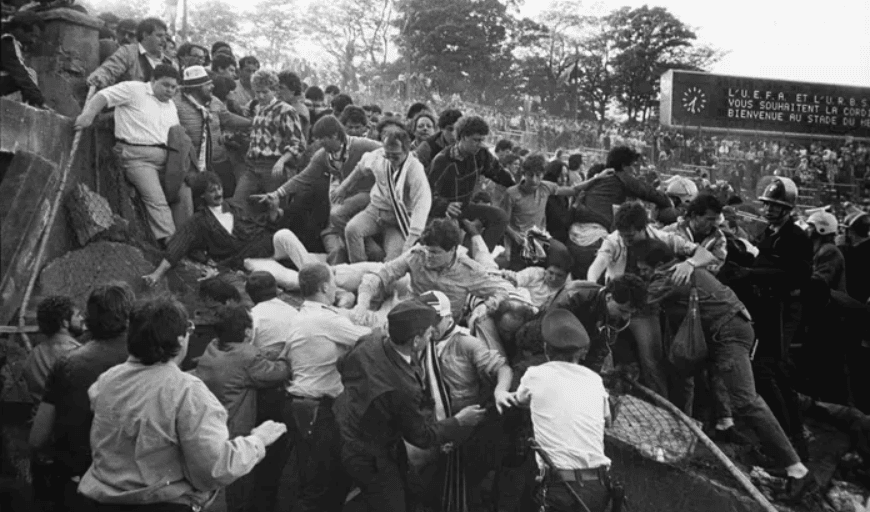
Just before the accident, Fagan had stated that he would be retiring, and Kenny Dalglish was chosen to take his place as player-manager. During his time as manager of the club, they won an additional three league titles and two FA Cups, including a “Double” in the league and cup competitions in the 1985–1986 season. The Hillsborough tragedy cast a shadow over Liverpool’s triumph, which occurred during an FA Cup semi-final match against Nottingham Forest on April 15, 1989.
During that match, hundreds of Liverpool fans were crushed against perimeter fence and died as a result. On that day, 94 spectators lost their lives; the 95th victim passed away in the hospital four days later as a result of his injuries, and the 96th victim passed away almost four years later without ever regaining consciousness. Following the tragedy at Hillsborough, the government conducted an investigation on the safety of stadiums. The Taylor Report that came out of this investigation helped pave the way for legislation that made it mandatory for top-division clubs to play in stadiums that were completely seated.
According to the findings of the research, the primary cause of the disaster was an excessive number of people there due to a breakdown in police control. During the 1988–1989 season, Liverpool was a part of the end to a league season that was the closest ever seen. Liverpool finished tied with Arsenal in terms of points and goal difference, but Arsenal scored one more goal than Liverpool during the final minute of the season, allowing them to win the title on the basis of total goals scored.
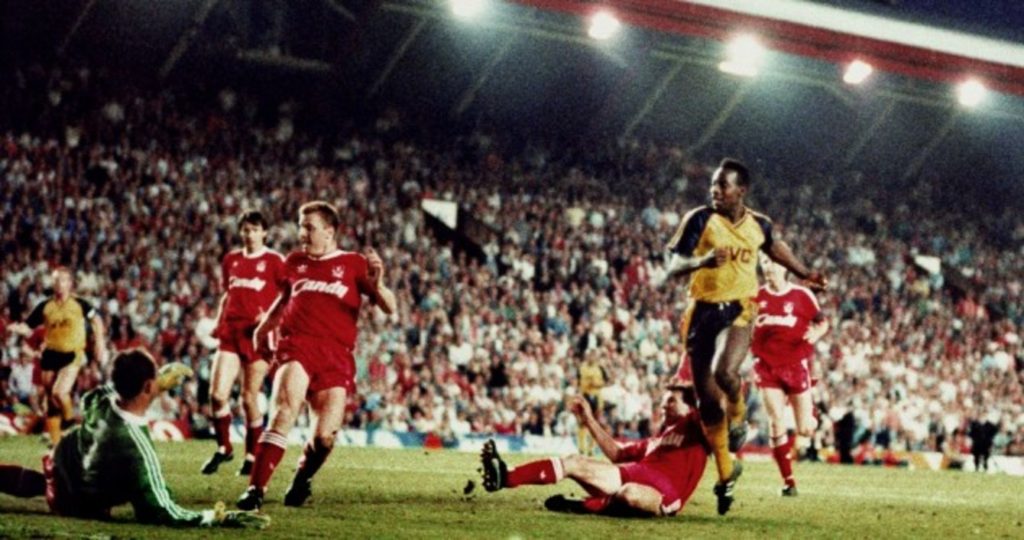
In 1991, when Dalglish announced his retirement as manager of Liverpool Football Club, he mentioned the Hillsborough disaster and the fallout from it as the reason for his decision. Former player Graeme Souness was hired to take his place. Under his direction, Liverpool won the FA Cup Final in 1992, but their league performances deteriorated, and they finished in sixth place for two seasons in a row. This eventually led to his departure in January of 1994. Roy Evans took over for Souness, and Liverpool went on to win the Football League Cup Final in 1995. Souness was the player that was replaced by Evans. In spite of the fact that they made some title challenges while Evans was the manager, the best that they could do was finish in third place in both 1996 and 1998.
As a result, Gérard Houllier was appointed co-manager for the 1998–1999 season, and he became the sole manager in November 1998 after Evans resigned. Liverpool accomplished the “Treble” in 2001, Houllier’s second full season in charge, by winning the FA Cup, the League Cup, and the UEFA Cup. During the 2001–02 season, Houllier needed significant heart surgery, and Liverpool ended in second place in the League, behind Arsenal. During that same season, Arsenal won the FA Cup. They were successful in winning another League Cup in 2003, but they were unable to mount a serious push for the championship in the two seasons that followed. At the conclusion of the 2003–2004 campaign, Rafael Bentez took over for Houllier as head coach. Liverpool defeated A.C. Milan 3–2 in a penalty shootout after the match concluded with a score of 3–3 to win the 2004–05 UEFA Champions League. This victory came despite the fact that Liverpool finished fifth in Bentez’s first season as manager.
The next year, Liverpool finished third in the Premier League and won the 2006 FA Cup Final by defeating West Ham United in a penalty shootout after the match finished 3–3 in regulation time. During the 2006–07 season, American businessmen George Gillett and Tom Hicks became the owners of the club in a transaction that valued the club and its outstanding debts at a total of £218.9 million at the time of the transaction. The team competed against Milan in the final of the UEFA Champions League in 2007, however this time they were defeated by a score of 2–1. During the 2008–2009 season, Liverpool finished in second place in the Premier League behind Manchester United with 86 points, which was the club’s greatest point total ever in the league.

Liverpool finished eighth in the Premier League during the 2009–10 season and did not earn a spot in the Champions League. After that, Bentez parted ways with the club on amicable terms and was succeeded as manager of Fulham by Roy Hodgson. At the beginning of the 2010–11 season, Liverpool was on the point of filing for bankruptcy, and the club’s creditors urged the High Court to overrule the wishes of Hicks and Gillett and enable the sale of the club.
This would have prevented Liverpool from filing for bankruptcy. In October of 2010, John W. Henry, owner of the Boston Red Sox and of Fenway Sports Group, was awarded ownership of the club after submitting a proposal that was deemed successful. As a result of the team’s poor start to that particular season, Hodgson was asked to step down as manager and replaced by Kenny Dalglish, a former player who had already served in that capacity. The fact that Liverpool finished in eighth place in the league in the 2011–12 season, the club’s worst finish in the league in the previous 18 years, led to Dalglish’s dismissal as manager of the club.
Despite achieving a record eighth League Cup victory and reaching the FA Cup final, Liverpool finished in eighth place overall. He was succeeded by Brendan Rodgers, whose Liverpool team in the 2013–14 season made an unexpected run at the title, finishing second behind champions Manchester City and subsequently returning to the Champions League. Along the way, they scored 101 goals, which was the most since the 1895–96 season, when they scored 106. He was fired. Rodgers was let go from his position as manager of Liverpool in October 2015, following a terrible 2014–2015 season in which the team placed sixth in the league and a poor start to the next campaign.
Jürgen Klopp has taken over as the new manager of the team. In Klopp’s first season with Liverpool, the club competed in both the Football League Cup and the UEFA Europa League finals. In both of those events, Liverpool came in second place. The club finished the 2018–19 season in second place with 97 points and only one game lost, which is a points record for a team that did not win the title. Klopp led Liverpool to consecutive finals of the Champions League in 2018 and 2019, with the latter result being a victory for the club over Tottenham Hotspur by a score of 2-0 to claim the UEFA Champions League title.
The FIFA Club World Cup was won for the first time by Liverpool with a 1–0 victory over Flamengo of Brazil in the championship match. After that, Liverpool went on to win the Premier League for the season 2019–20, becoming the first team from the city to win the top-tier league title in thirty years. The club finished the season having broken multiple records, including winning the league with seven games left to play, which is the earliest any team has ever won the title, collecting a club record 99 points, and achieving a joint-record 32 wins in a top-flight season. In addition, the club amassed a club record 99 points and achieved a joint-record 32 wins in a top-flight season.

Colors and Badge
Liverpool’s home colors have been entirely red for a significant portion of the club’s history; yet, when the club was first established, its kit resembled that of modern-day Everton more closely. Up to the year 1894, the club wore blue and white quartered shirts. That was the year that they switched to the city’s color of red. The liver bird, which is the symbol of the city, was chosen to be the club’s insignia in the year 1901; however, it was not added to the uniform until the year 1955. It wasn’t until 1964 that Liverpool manager Bill Shankly made the decision to switch to an all-red jersey; before to that, the team had worn red shirts with white shorts. According to what Ian St. John recalls in his memoirs, the first occasion Liverpool played in an all-red kit was against Anderlecht:
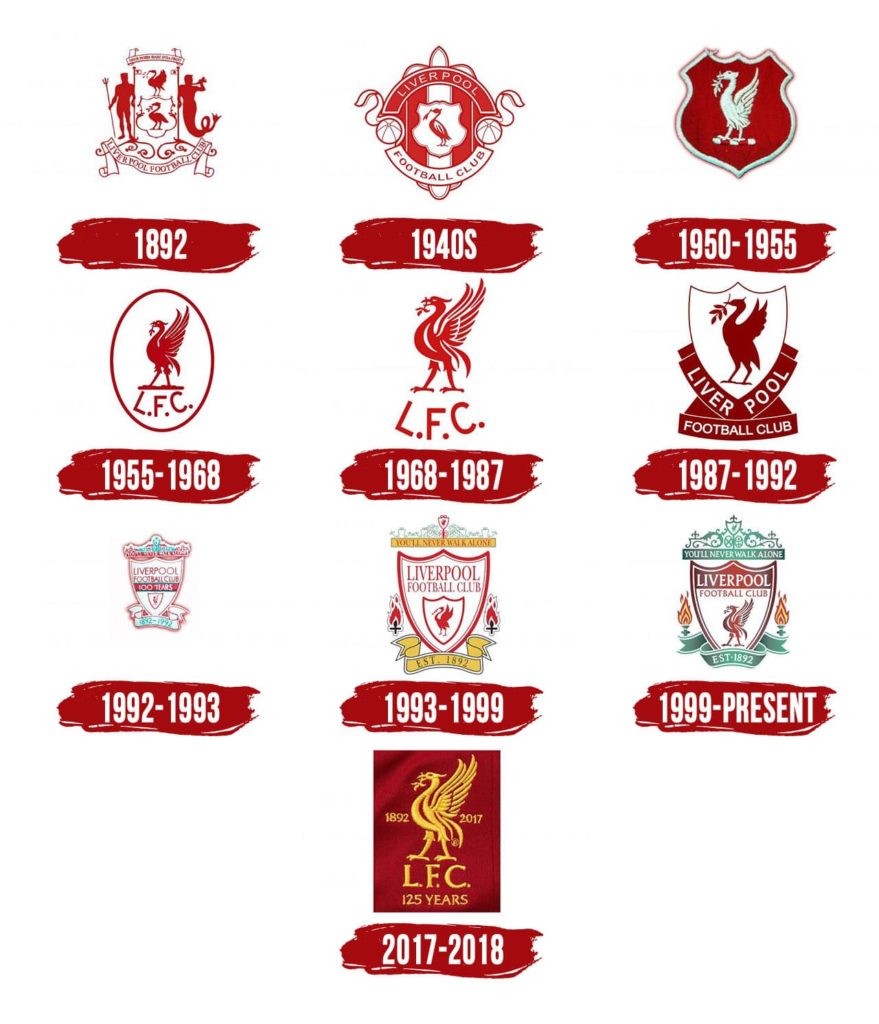
He [Shankly] thought the color scheme would carry psychological impact – red for danger, red for power. He came into the dressing room one day and threw a pair of red shorts to Ronnie Yeats. “Get into those shorts and let’s see how you look”, he said. “Christ, Ronnie, you look awesome, terrifying. You look 7 ft tall.” “Why not go the whole hog, boss?” I suggested. “Why not wear red socks? Let’s go out all in red.” Shankly approved and an iconic kit was born.
The majority of the time, the Liverpool away kit has consisted of yellow or white shirts with black shorts, however there have been a few occasions where this has not been the case. 1987 saw the debut of an all-gray kit, which remained in use until the centenary season of 1991–1992, when it was replaced with a combination of green shirts and white shorts. The current uniform has green shirts with white shorts. After using a variety of color combinations throughout the 1990s, such as gold and navy, bright yellow, black and grey, and ecru, the club’s away kits were white and yellow until the 2008–2009 season, when it reintroduced the grey kit. Since then, the club has alternated between yellow and white for its away kits. The current away kit may clash with the home kit of a side, hence a third kit has been created specifically for European away matches.
However, the third kit may also be worn in domestic away matches when this occurs. Warrior Sports, who began supplying the club with uniforms at the beginning of the 2012–13 season, was the company that was responsible for the design of the jerseys from 2012 until 2015. Warrior’s parent business, New Balance, made the announcement that it would be joining the worldwide football market in February of 2015. As part of this move, clubs that are sponsored by Warrior will now be outfitted by New Balance. Umbro was the only other manufacturer of branded shirts worn by the club until 1985, when they were replaced by Adidas, who produced the kits until 1996, when Reebok took over. Since then, the club has worn shirts made by Reebok. They created the kits for a period of ten years before Adidas took over the production of the kits from 2006 to 2012. At the beginning of the 2020–21 season, Nike was selected to become the club’s official supplier of uniforms.
After reaching an agreement with Hitachi in 1979, Liverpool became the first English professional team to display a sponsor’s emblem on their playing jerseys. The logo was for Hitachi. Since that time, companies such as Crown Paints, Candy, Carlsberg, and Standard Chartered have been sponsors of the club. The arrangement with Carlsberg, which was struck in 1992, was the one that lasted the longest of any sponsorship deal in the history of the English Premier League. The sponsorship deal between the club and Carlsberg was severed before the beginning of the 2010–2011 season, when Standard Chartered Bank took over as the club’s primary financial backer.
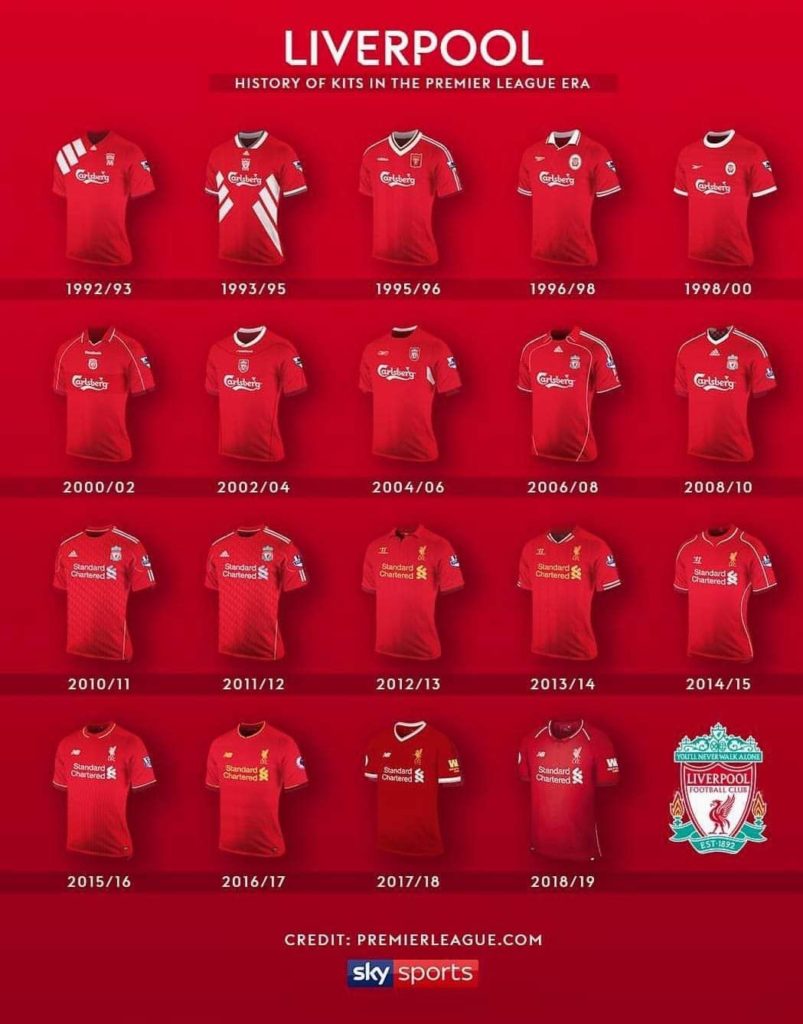
The liver bird, which in the past had been enclosed within a shield, serves as the inspiration for the symbol that represents the city of Liverpool. In 1992, when the club was celebrating its 100th anniversary, a new badge was commissioned that featured a representation of the Shankly Gates as part of the design. The next year, twin flames were added at either side as a symbolic representation of the Hillsborough memorial that is located outside of Anfield and contains an eternal flame in commemoration of those who passed away as a result of the Hillsborough disaster. When Warrior Sports released their first Liverpool kit in 2012, they removed the shield and gates from the badge, bringing it back to how it appeared on Liverpool shirts in the 1970s. Additionally, the flames were moved to the back collar of the shirt, surrounding the number 96 to represent the number of people who lost their lives at Hillsborough.
Stadium
In 1884, construction began on Anfield, which was located on ground close to Stanley Park. It was initially used by Everton, but the club moved to Goodison Park after having a dispute over rent with John Houlding, who owned Anfield at the time. The stadium is located approximately three kilometers from the center of Liverpool. Houlding formed Liverpool in 1892 after he was left with an empty ground, and the team has played at Anfield continuously since that time. Despite the fact that the stadium could have held 20,000 people at the time, only 100 spectators were present for Liverpool’s inaugural match at Anfield.
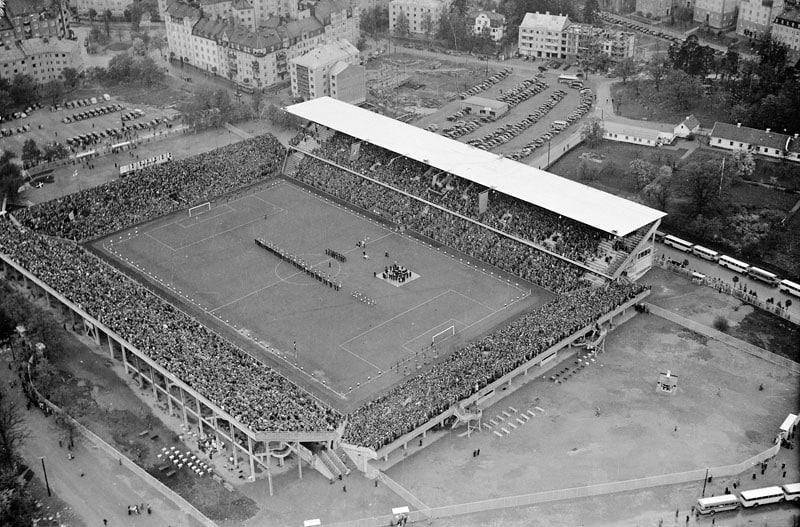
The Oakfield Road Embankment was the original name given to the Kop when it was constructed in 1906 in response to the large number of spectators who attended matches. On its first day of competition, September 1, 1906, the home team defeated Stoke City by a score of 1-0. In 1906, the banked stand at one end of the stadium was formally dubbed the Spion Kop after a hill in KwaZulu-Natal. The name comes from the fact that the stand was built on a slope. During the Second Boer War, the hill was the location of the Battle of Spion Kop, which claimed the lives of over 300 members of the Lancashire Regiment, the most of whom were from the city of Liverpool. When it was at its busiest, the stand had the capacity to house 28,000 spectators, making it one of the largest single-tier stands in the world. At the time, Anfield’s Spion Kop was the largest of the several stands in England that bear the name, and it could accommodate more spectators than some entire football grounds. Other stadiums in England also bore the name. Anfield was able to seat more than 60,000 fans at its busiest point and had a capacity of 55,000 until the 1990s.
However, as a result of the Taylor Report’s recommendations, all Premier League clubs were required to convert to all-seater stadiums in time for the 1993–94 season, which resulted in Anfield’s capacity being reduced to 45,276. The findings of the report served as the impetus for the redevelopment of the Kemlyn Road Stand, which was reconstructed in 1992 to coincide with the club’s centennial and was referred to as the Centenary Stand until 2017, when it was renamed the Kenny Dalglish Stand. The renaming of the stand took place in 2017.
In 1998, an additional deck was erected to the Anfield Road end of the stadium, which substantially boosted the capacity of the ground but also led to issues when it was opened. After a report of movement of the stand’s top tier was made before to the beginning of the 1999–2000 season, a number of support poles and stanchions were installed in order to provide the tier with an additional degree of stability.
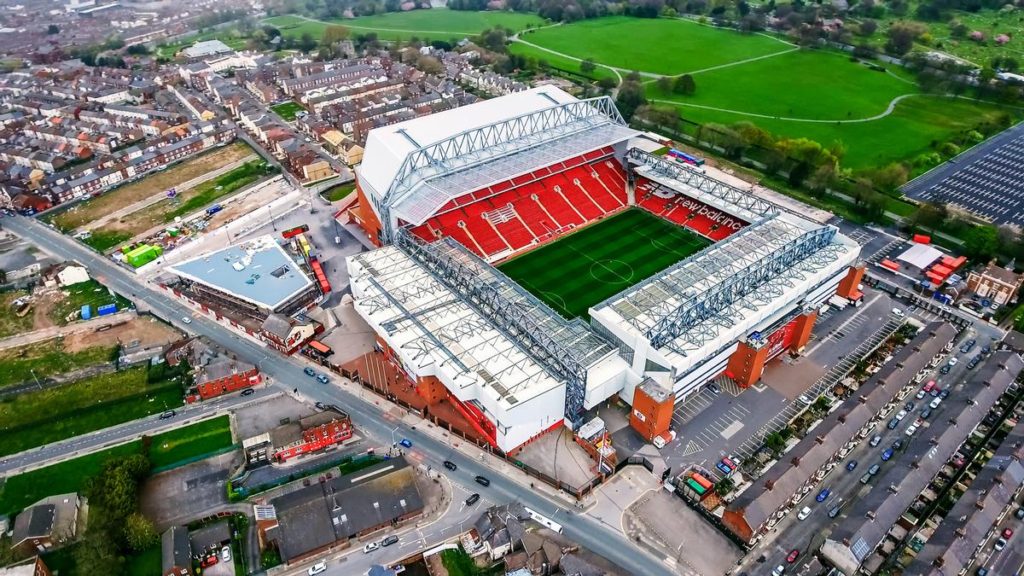
In May of 2002, Liverpool made public their intentions to relocate to the projected Stanley Park Stadium as a result of limitations placed on their ability to enhance the capacity of Anfield. Planning approval was granted in July of 2004, and in September of 2006, Liverpool City Council agreed to lease the proposed land to Liverpool for a period of 999 years. In February of 2007, George Gillett and Tom Hicks took control of the team, and shortly thereafter, the proposed stadium underwent some significant revisions. In November 2007, the Council decided to go forward and adopt the revised design. The stadium was expected to open in August of 2011 and would have a capacity of 60,000 spectators; the construction contract for the stadium was awarded to HKS, Inc.
Because Gillett and Hicks were having trouble securing the necessary £300 million in funding for the development in August of 2008, construction on the property was halted. BBC Sport reported in October 2012 that Fenway Sports Group, the new owners of Liverpool Football Club, had decided to redevelop their current home at Anfield stadium rather than building a new stadium in Stanley Park. This decision was made in lieu of the club constructing a new stadium in Stanley Park. Anfield’s seating capacity was going to be increased from 45,276 to about 60,000 at a cost of approximately £150 million as part of the reconstruction project.
After the completion of work on the new Main stand, the total number of spectators that Anfield can accommodate rose to 54,074. The extension, which cost 100 million pounds, adds a third level to the stand. All of this was a part of a project to develop the Anfield area that cost a total of 260 million pounds. During that time, Jurgen Klopp was the manager, and he referred to the stand as “amazing.”
Support
One of the football teams with the most devoted fans in the world is Liverpool. The organization claims that its global supporter base is comprised of more than 200 officially recognized Supporters Clubs located in at least 50 different nations. Spirit of Shankly is one of the more notable groups. The club makes the most of this support by performing over the summer in front of large crowds all over the world, including 101,000 people in Michigan, United States, and 95,000 people in Melbourne, Australia, respectively. Kopites is a term that is commonly used by Liverpool supporters to refer to themselves.
This term is a reference to the fans who used to stand on the Kop at Anfield but now sit there instead. In 2008, a group of fans from Liverpool made the decision to start a splinter club known as A.F.C. Liverpool in order to play matches for fans who were unable to afford to see Premier League football due to ticket prices. The song “You’ll Never Walk Alone,” which was first performed in the musical Carousel by Rodgers and Hammerstein and was later recorded by Liverpool musicians Gerry and the Pacemakers, is the club’s anthem and has been sung by the Anfield crowd since the early 1960s.
The song was originally performed in the musical Carousel, which was written by Rodgers and Hammerstein. Since then, it has garnered a lot of support from followers of other clubs all across the world. The lyrics to the song are engraved on the top of the Shankly Gates, which were dedicated to the memory of the band’s former manager, Bill Shankly, on August 2, 1982. The part of the Shankly Gates that reads “You’ll Never Walk Alone” is also featured on the crest that is used by the club.
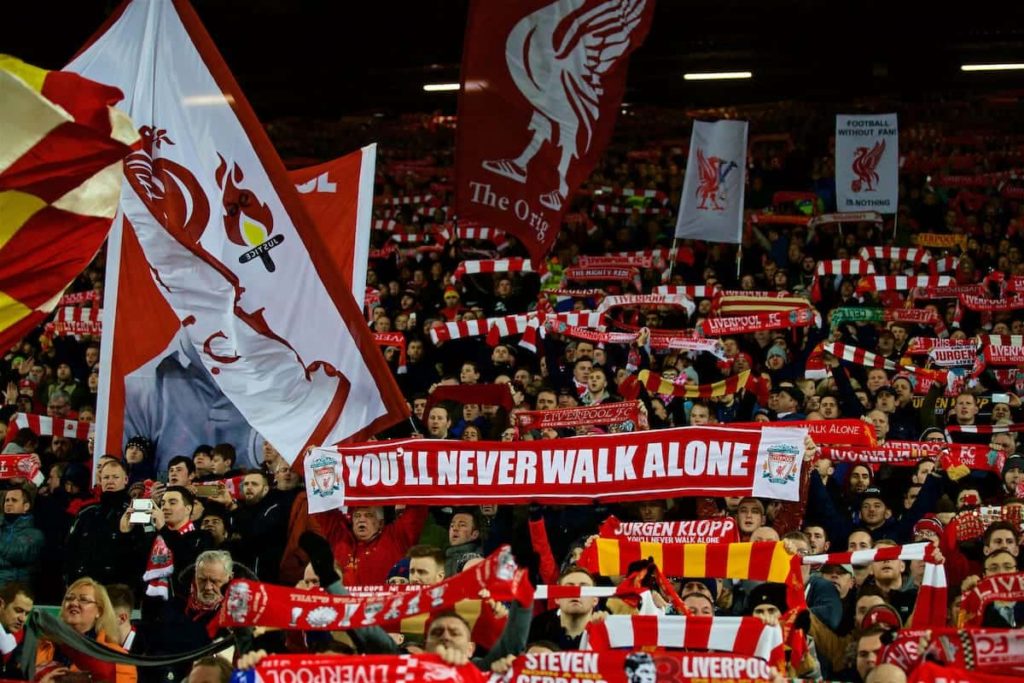
The club’s fans have been involved in two separate incidents that occurred inside their stadiums. The initial tragedy occurred in 1985 in the Heysel Stadium, when 39 Juventus fans lost their lives in the stadium. They were pushed into a corner by Liverpool fans who had charged in their direction, and the weight of the fans who were cornered caused a wall to fall. UEFA decided that the incident was entirely the fault of the Liverpool fans and decided to expel all English clubs from European competition for a period of five years as a result. Despite having won the League in 1990, Liverpool was given an additional yearlong suspension that prevented it from competing in the European Cup that year (1990–1991). In 1987, twenty-seven supporters were taken into custody on suspicion of manslaughter and were ultimately extradited to Belgium to stand prosecution for the crime.
In 1989, following a trial that lasted about five months in Belgium, 14 Liverpool fans were found guilty of involuntary manslaughter and received penalties of three years each; however, half of their sentences were suspended. The second tragedy occurred on April 15, 1989 at Hillsborough Stadium in Sheffield during an FA Cup semi-final match between Liverpool and Nottingham Forest. The match was being played for the FA Cup. The overcrowding that occurred at the Leppings Lane end of the stadium, which later became known as the Hillsborough catastrophe, was responsible for the deaths of 96 Liverpool fans. In the days that followed, a publication called “The Sun” published a piece with the headline “The Truth,” in which it asserted that Liverpool fans had stolen belongings from the deceased, as well as urinated on and assaulted law enforcement officers.
Investigations that followed demonstrated that the charges were untrue, which led to a boycott of the newspaper by Liverpool supporters across the city and elsewhere; many continue to refuse to purchase The Sun even today, thirty years after the fact. As a result of the tragedy, a great number of groups that provide assistance came into existence. One of these is the Hillsborough Justice Campaign, which represents bereaved families, survivors, and supporters in their fight for justice.
Rivalries
Everton, another team from Liverpool, is the opponent of Liverpool in the Merseyside derby, and the two teams have been rivals for the longest amount of time. The history of the rivalry can be traced back to the creation of Liverpool as well as a dispute between Everton officials and the previous owners of Anfield. As one of the few local derbies that does not need fans to be separated into separate sections, the Merseyside derby has earned the reputation of being the “nice derby.” Since the middle of the 1980s, both on and off the field, the rivalry has grown more intense.
Since the beginning of the Premier League in 1992, the Merseyside derby has had more players sent off than any other Premier League game. It’s been called “the most ill-disciplined and explosive fixture in the Premier League,” which is quite the accolade. The number of people who support Liverpool in the city is twice as large as the number of people who support Everton, therefore Liverpool has a clear advantage in this regard.
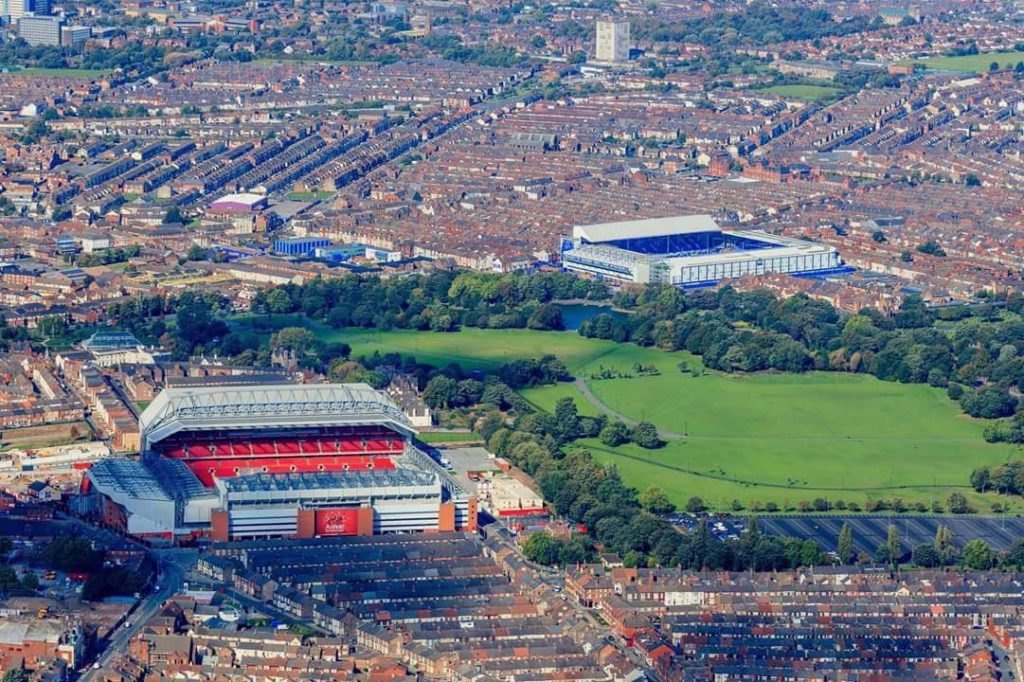
The competition between Liverpool and Manchester United during the Industrial Revolution in the 19th century is where the rivalry between the two cities began. By car, the distance between Liverpool and Manchester along the East Lancs Road is around 48 kilometers (30 miles), despite the fact that these two cities were connected by the first inter-city railway in the world. Liverpool and Manchester United are the most successful English teams in both domestic and international competitions; as a result, fans of both clubs can be found all over the world. France Football magazine has ranked Liverpool and Manchester United as the two most important clubs in England.
It is believed to be the most famous fixture in English football due to the fact that it is regarded as one of the most intense rivalries in all of world football. Between 1964 and 1967, the two clubs took turns reigning as champions, and Manchester United became the first English team to win the European Cup in 1968. This was followed by four victories for Liverpool in the European Cup by the club Liverpool. Liverpool’s run of titles in the 1970s and 1980s coincided with Manchester United’s 26-year title drought, and United’s success in the Premier League-era likewise coincided with Liverpool’s 30-year title drought. Additionally, the two clubs have only finished first and second in the league five times between them, despite the fact that they have a combined total of 39 league titles and nine European Cups between them.
Despite this, the two clubs are fierce competitors and have won a combined total of 39 league titles Because of the intense competition between the teams, transactions involving player transfers are conducted between them very infrequently. Phil Chisnall, who had previously played for Manchester United, was the final player to be traded between the two clubs in 1964, when he moved from Liverpool to Manchester United.
Ownership
John Houlding, the original owner of Anfield and the person responsible for establishing Liverpool Football Club, served as the club’s first chairman from the time it was established in 1892 until the year 1904. Following Houlding’s departure, John McKenna was appointed to fill the role of chairman. After that, McKenna was elected to the position of President of the Football League. Before John Smith, whose father was a shareholder in the club, took over as chairman in 1973, the position had already been held by a number of different people. Before he stepped down as manager of Liverpool in 1990, he presided over the club through its most prosperous era.
Noel White took over as chairman of the company after he retired in 1990. David Moores, whose family had controlled the club for more than half a century when he became chairman in August of 1991. Additionally a shareholder at Liverpool, his uncle John Moores also served as chairman of Everton Football Club from 1961 until 1973. Moores had a 51% stake in the club at the time, and in 2004, he indicated that he would be open to receiving an offer for his shares in Liverpool. Moores finally parted ways with the club on February 6, 2007, when he sold it to two American businessmen named George Gillett and Tom Hicks. The club and all of its outstanding debts were valued at a total of £218.9 million in the purchase.
The two individuals paid £5,000 for each share, which totaled £174.1 million for the shareholding and £44.8 million to pay off the club’s debts. Gillett and Hicks considered selling the club as a result of their disagreements with one another and the lack of support they received from the team’s supporters. On April 16, 2010, Martin Broughton was given the role of chairman of the club in order to oversee the sale of the club. When the club’s parent company’s records were made public in May 2010, they revealed that the corporation had lost £55 million and was $350 million in debt (due to a leveraged buyout). These figures caused the auditor KPMG to qualify its audit opinion. Gillett and Hicks were taken to court by the group’s creditors, which included the Royal Bank of Scotland, in order to compel them to allow the board to proceed with the sale of the club, which is the primary asset held by the holding company. Although Gillett and Hicks still had the opportunity to appeal the decision, a judge in the High Court named Mr. Justice Floyd issued a ruling that was in favor of the creditors and cleared the way for the sale of the club to Fenway Sports Group, which was formerly known as New England Sports Ventures.
On October 15, 2010, Fenway Sports Group purchased Liverpool for a total price of £300 million. One analysis from 2010 estimated the worth of Liverpool’s trademarks and associated intellectual property at £141 million, which was a rise of £5 million over the previous year’s estimate. Liverpool has been called a global brand. AA is the brand grade that was bestowed upon Liverpool (Very Strong). The American business publication Forbes ranked Liverpool as the sixth most valuable football team in the world in April of 2010. The publication placed Liverpool behind Manchester United, Real Madrid, Arsenal, Barcelona, and Bayern Munich. The publication valued the club at $822 million (£532 million), excluding debt. Accountants from Deloitte placed Liverpool in eighth place in the Deloitte Football Money League, which is a ranking of the football clubs from around the world based on their revenue. During the 2009–10 season, Liverpool earned a total of 225.3 million euros.
According to a research that was published in 2018 by Deloitte, the club brought in an annual revenue of €424.2 million for the year before, and Forbes estimated that the club was worth $1.944 billion. The club was estimated to be worth $2.183 billion by Forbes in 2018, when annual income reached a record high of €513.7 million. According to Deloitte, the club’s income grew to €604 million (or £533 million) in 2019, making it the first in its history to surpass the half-billion-pound milestone. The decision of the club’s owners in April 2020 to place all non-playing staff on furlough in order to save money during the pandemic brought criticism from both the fans and the media. As a direct result of this, the club reversed their decision and publicly apologized for the choice they had made in the first place.
